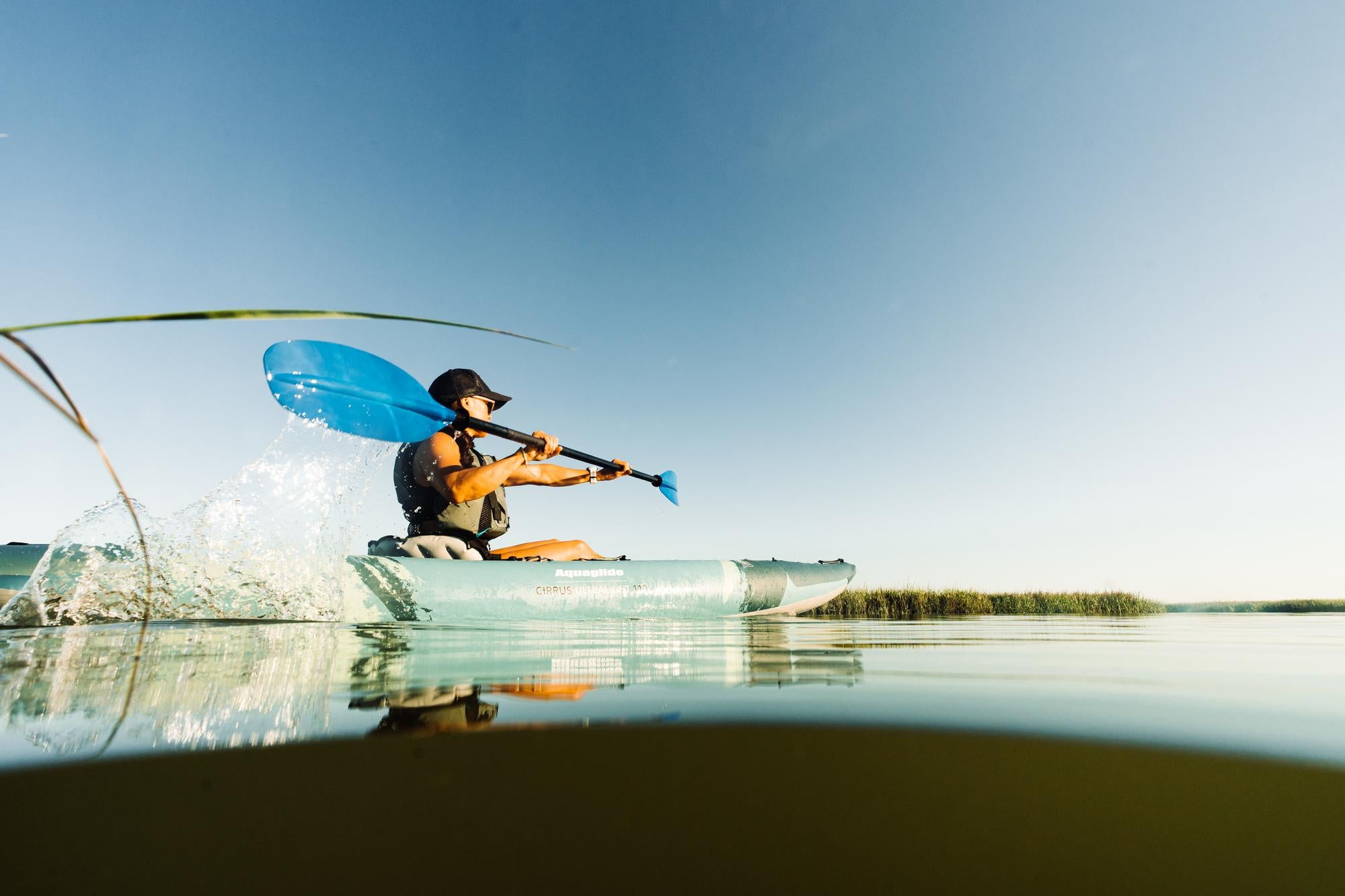How to Inflatable Kayak Surf
So you’ve been inflatable kayaking for a while on rivers, lakes and oceans. You know your equipment well, you’ve had a few swims and know how your vessel handles in choppy, windy conditions. Are you ready to step it up another level? Outside of exploring inland bays, estuaries and other ocean scapes in your inflatable kayak, have you thought of taking your boat for a surf in the wave break? Before you jump into the deep end, here are some basic pointers to get you started. As always, we encourage a thorough understanding of your skills and risk assessment, as well as taking all safety precautions such as SWR training, wearing a helmet/PFD, and not paddling alone.
Basic Skills
Before you jump in the saddle, run through a checklist of basic skills and be sure you feel competent in all of them. Stamina from consistent kayaking experience in incumbent or difficult weather is key. The surfzone can be unfriendly and you’ll want to be comfortable, resilient physically and expect hectic conditions. While having a roll is ideal (pick up a set of thigh straps for good measure), in the event of a flip, if you're well practiced and comfortable with a wet exit and self rescue, all while keeping track of your paddle, then you’ve got what it takes to give ocean surf a go. If you are a little rusty or uncertain if your skills are up to snuff, schedule a class or private instruction. With a little dedicated effort and instruction from a professional, you can get there.
Personal Equipment
Diving into the surf zone requires more equipment than mellower touring jaunts. Best practices suggest wearing a helmet (in case you hit your head during a roll or a swim), a spray skirt, a life jacket and a dry suit. If you haven’t worn a dry suit before, they are unreal when it comes to keeping paddlers dry and warm. If you get splashed, fully submerged or wet in any way, the dry suit keeps you cozy and you’ll last way longer in the water.
Size of Boat
The ideal size of a kayak for inflatable surfing is a bit of a moving target. The Navarro 130 and Noyo 90 were named as two of the best nine surf kayaks by beginnersurfgear.com. Features noted that make the Navarro a good pick include the ability to add a spray skirt with the deck cover, a durable drop-stitch floor and hex-shell-covered pontoons, plus a design and construction suited for all conditions (even the chaos of the surf zone). The velcro seat and footrest adjustment straps create a higher level of precision in maneuvering for an inflatable kayak. With this kayak you also have the option of paddling it tandem or solo.
Surf Kayaking
Once you’re dialed on your basic skills, protective equipment and boat choice, you're ready to hop in the surf. To launch in the rowdy surf zone, find the calmest looking zone to enter, keep your weight forward and keep a consistent strong forward stroke rolling. Work on predicting break timing and see if you can hit each wave set with optimal timing.
Once you’ve paddled past the break far enough, look for small waves that aren’t too hollow to start on. Your inflatable will be slightly slower on the wave than a rigid kayak. This is an advantage for beginners. To catch a wave, position yourself facing the beach and start paddling hard as the wave comes up behind you. As you gain speed and the wave propels you, lean back to keep the stern from nose diving. Use your paddle blade to gently feather and guide the kayak along the wave break. For more tips, read this article from itiwit.co.uk.
With experience, the right gear, safety measures, and a good bit of trial and error, you'll be surfing like a pro in no time.




